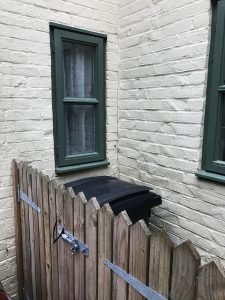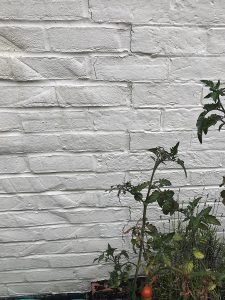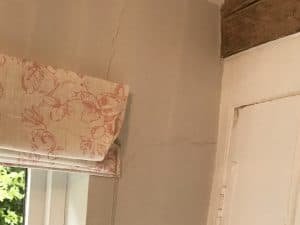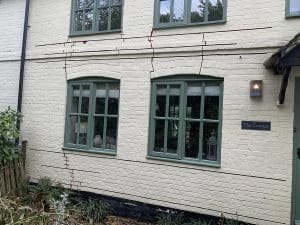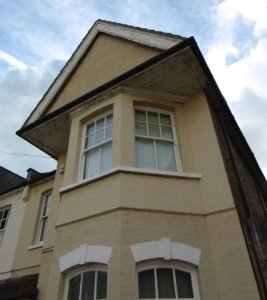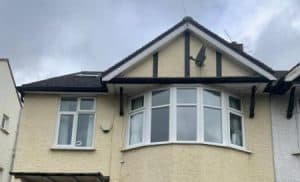Multiple Crack Repair Methods Used to Repair Period Cottage

The Problem
This beautiful cottage in Berkshire is believed to have been built around 1730 and has a number of old and more recent additions.
The property was suffering from external and internal cracking throughout. Much of the cracking had been caused by differential movement. This occurs when different sections of the building, in this case, later additions, are built on separate foundations. There can be a difference between the rate and the amount that the foundations settle, which causes separation and cracking between the walls.
The cottage was also suffering from brick arch lintel failure, which caused extensive internal and external cracking between the windows of the ground and first floor, both to the front and rear.
Following a site survey, our engineer designed a repair specification comprising of masonry beaming, multiple crack repair methods, and pinning.
The Solution
Masonry Beaming
Masonry beaming was required to the front and rear of the property, as well as internally in the master bedroom. Masonry beaming, comprises of twin bands of long, stainless-steel helical bar installed laterally into the bed joints of the masonry. The twin bands of “helibar” are inserted into the joints at manufacturer specified intervals, and encapsulated with thixotropic, cementitious grout. This reinforcement redistributes the structural loads over a wider area.
Crack Repair Methods
Crack Stitching
To reconnect the masonry either side of the cracks in the walls, short, one metre lengths of helical bar are positioned centrally and horizontally within the raked out mortar bed to stitch the cracks. Again, these are encapsulated with thixotropic grout, which is also injected into the cracks.
Repairing Cracks in Rendered Walls
For internal cracks in plastered walls, a slightly different method is employed. Slots are cut through the plaster and into the masonry and the crack stitching bars are installed.
Repairing Cracks at Corners
For cracks close to corners, there isn’t enough width for the a crack stitching bar to span. In these situations, “cem” ties were used. Cem ties are high tensile strength, stainless steel bars that are installed into clearance holes that are drilled horizontally through the end of the wall at 90 degrees to the crack. The tie is installed along with cementitious grout. This “pinning” reconnects the masonry either side of the crack.
Repairing Brick Arch Lintels
Along with the masonry beaming, vertical pinning was used to reconnect the bricks forming the arched lintel to the bricks above them.
Project Completion
All areas of disturbed mortar were made good, resulting in almost invisible repairs.
The client was thrilled with the work, which was completed on time and within budget.
The Problem This beautiful cottage in Berkshire is believed to have been built around 1730 and has a number of old and more recent additions. The property was suffering from external and internal cracking throughout. Much of the cracking had been caused by differential movement. This occurs when different sections of the building, in this […]


